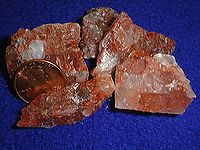
Photo from wikipedia
Abstract 3D printing of cementitious materials is an innovative and promising approach in the construction sector, attracting much attention over the past few years. Use of waste cementitious materials in… Click to show full abstract
Abstract 3D printing of cementitious materials is an innovative and promising approach in the construction sector, attracting much attention over the past few years. Use of waste cementitious materials in the production of 3D printable components increases the sustainability and cost-effectiveness of this process. This work proposes an environmentally friendly 3D printable cementitious material involving the use of magnesium potassium phosphate cement (MKPC) with various ratios of fly ash replacement ranging from 0 to 60 wt% to increase the working time of the binder. Silica fume was used at up to 10 wt% to adjust rheological and mechanical properties. The performance of the developed MKPC binders with different formulations in the context of 3D printing was assessed via a detailed investigation of the workability, extrudability, buildability, compressive strength, porosity and microstructural analysis. Amongst the mixtures studied, the optimum MKPC formulation involving 60 wt% fly ash and 10 wt% silica fume with a borax-to-magnesia ratio of 1:4 was selected for a small-scale printing demonstration in line with its rheological and mechanical properties. Finally, a 20-layer component with a height of 180 mm was printed in 5 min to demonstrate the feasibility of the adopted mixture in 3D printing.
Journal Title: Construction and Building Materials
Year Published: 2019
Link to full text (if available)
Share on Social Media: Sign Up to like & get
recommendations!